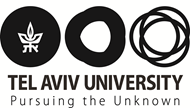Astronomy & Astrophysics Seminar: Results from OGLE-MOA-Wise microlensing survey (Ph.D. seminar)
Yossi Shvartzvald, TAU
Abstract:
The discovery of thousands of extrasolar planets ranks among the most exciting scientific developments of the past decade. Among the techniques currently used to discover extrasolar planets, microlensing has some unique capabilities. It is the most sensitive technique to detect planets beyond the "snowline", where gas and ice giants are likely to form.
Over the past four years, we have carried out a "second generation" microlensing survey, combining OGLE, MOA, and the Wise observatory. I will present a statistical analysis for the first four seasons of the survey. Over 15% of the events that were observed by all three sites showed a deviation from a single-lens microlensing, and for ~1/4 of those the anomaly might be explained by a planetary companion. By accounting for our detection efficiency, we find a ~20-25% planetary system abundance. Moreover, our results suggests that massive planets around low-mass stars are common, which may be in conflict with planetary formation scenarios. The data also can set constraints on the stellar multiplicity fraction and the binary mass ratio distribution.
Seminar Organizer: Prof. Rennan barkana


